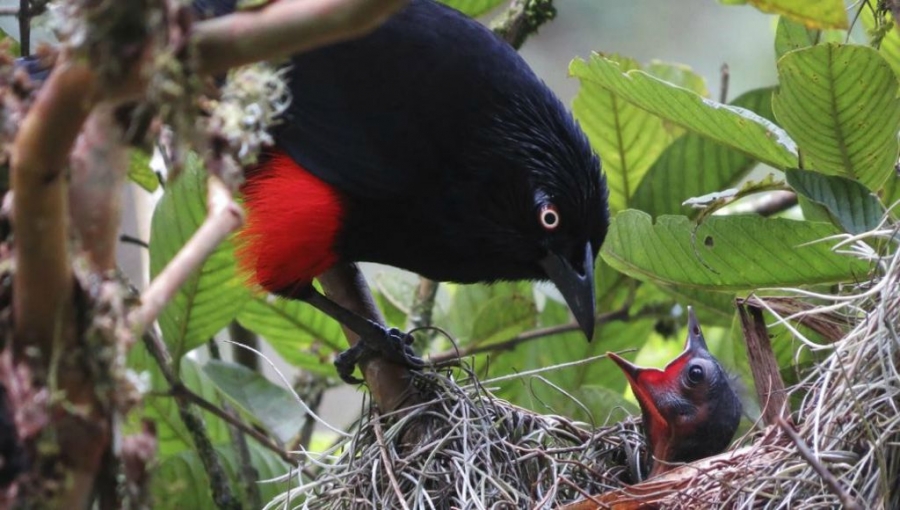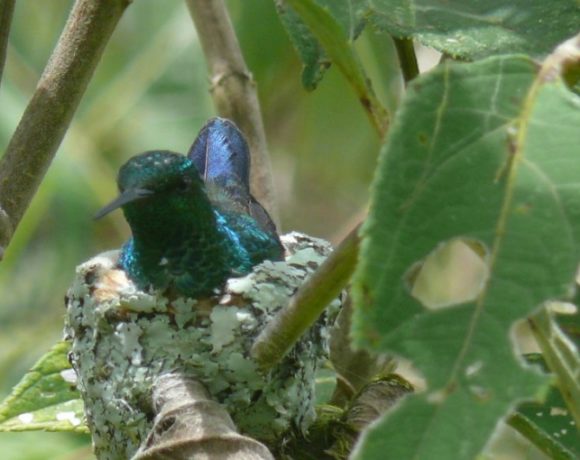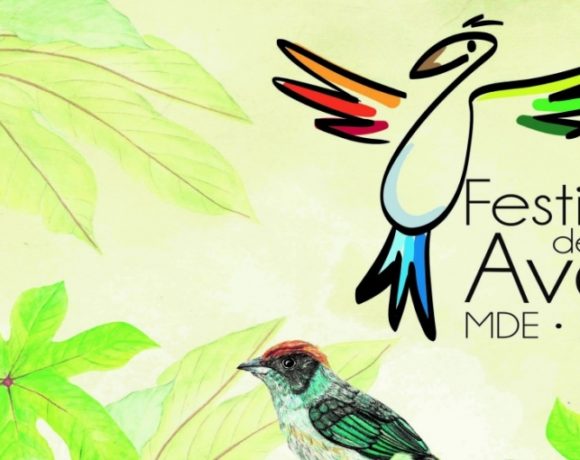Medellin Ecotourism: Birding in Alto de San Miguel

Unless you’re accompanied by a local, expert birder — such as someone from the Medellin-based Sociedad Antioqueño de Ornitologia (SAO), or a guide specially trained by the SAO – then birding in and around Medellin can be frustrating, especially for recent newcomers.
Noise, traffic, uncertain public transport, occasional security problems (such as at El Volador and at Cerro Nutibara), inadequate signage, lack of accurate directions, lack of local guides at most parks, and hours-of-entry restrictions at certain public parks (such as at el Jardin Botanico, the botanical garden) can complicate your birding plans.
However, just outside of Medellin in the neighboring municipality of Caldas is an unusual nature reserve that isn’t well-known to most outsiders: Alto de San Miguel, where the Rio Medellin is born.
Aside from occasional SAO-organized bird walks here, luckily this place also has a local, expert bird-guide – Carmen Florinda Londoño – who can lead you through the park, starting-off at 6 a.m. (birder’s time!)
Guided birding reservations are required, at least a week in advance. Phone: 419-6828. Email: refugioaltodesanmiguel@gmail.com
Total cost for small groups: COP80,000 (at the time of this writing, that’s about US$26; if split five ways, that’s about US$5 per birder).
Note: You’ll need to wear your wading boots (best if they reach almost to your knees) for this birding hike, as you’ll be wading across this shallow tributary of the Rio Medellin several times. Best to bring a rain jacket as well, as Alto de San Miguel is one of the wettest areas in metro Medellin.
The reserve — located at the edge of a tucked-away neighborhood (vereda La Clara) — is just off the main “Autopista Sur” highway connecting Medellin with La Pintada.
The site is reached by driving a few kilometers southward of where the Autopista Sur ends – that is, where the Autopista Sur merges into separate highways for Bolombolo (to your right) and for La Pintada (straight ahead). You want to take the highway straight-ahead for La Pintada.
Once you’re on the highway for La Pintada, drive ahead for about four to five kilometers. Just before the turnoff for vereda La Clara (at left), you’ll pass a truckstop on your left.
Just beyond the truckstop, about 300 kilometers ahead, is the entrance to vereda La Clara, on your left. At this intersection, there’s a small dairy store (on your left) featuring a small, faded painting of a cow. It’s the only signpost available – an unfortunately common problem in many areas around Medellin (and around Colombia generally, sorry to say).
This entrance to La Clara also is just prior to reaching the SENA technical school at La Salada (also on your left on the highway to La Pintada). If you see the SENA sign, then you’ve gone too far. Look for a safe place to turn around!
Once you’re on the paved road to La Clara, you’ll need to cross over three narrow bridges. Always bear left on this road, as there are roads that branch-off to the right, to other veredas.
After driving about four kilometers, you’ll reach the tiny vereda of La Clara. Look for a soccer field on your right. Adjacent to the soccer field is the “Caseta Comunal” (community center), where the office of Corporacion Mundo Silvestre Alto de San Miguel is located.
Starting from the Corporacion Mundo Silvestre office, Carmen will lead you into the reserve itself, passing by some grassy fields alongside the river. Unfortunately, weekend picnic-goers leave plastic trash all over the place, creating a bad initial impression for this birding trip.
Fortunately, the farther along you go, the trash recedes — and the beauty of the river and its mountain surroundings grows. While pines cover part of the mountainsides, the river edges are dominated by native flowers, plants and trees – perfect for attracting birds.
On a recent, three-hour bird-walk with Carmen, we tallied 34 species, including my first boreal migrant of the 2015 season: a Canada Warbler. The reserve itself has a list that tops 210 species.
















